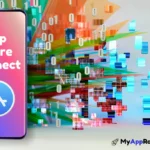The Ultimate Guide to What is Pay Per Install?

Reaching a targeted audience and getting the right users has become a big challenge for all developers and marketers due to the high competition in the app store. Pay Per Install is one of the dynamic strategies to reach the targeted audience and drive the maximum app installs. This article is about the complete concept of the pay per install, its significance, and how to optimize the PPI campaign.
Introduction
Mobile apps are a big part of our daily routine life, app developers and promoters are always trying to reach the maximum number of users and get the app downloads. Pay Per Install (PPI) is one of the best approaches to increase the number of app installs, and also reach the targeted audience.
Understanding Pay Per Install
2.1 The Basics of Pay Per Install
Pay Per Install is an advertising model where developers pay a fee every time their app is successfully installed on a user’s device. This model provides a unique advantage by shifting the focus from impressions or clicks to actual conversions, i.e., installations.
2.2 How to Pay Per Install Works
In a usual Pay Per Install situation, app creators work together with PPI networks. These networks have a group of users who are motivated to download and test out new apps. When a user installs the app being promoted, the developer then pays a prearranged fee to the network.
Benefits of Pay Per Install Advertising
3.1 Rapid User Acquisition
One of the most significant advantages of Pay Per Install is the speed at which developers can acquire users. Traditional advertising methods might take time to show results, but with PPI, the app gains immediate visibility.
3.2 Targeted Reach
Pay Per Install networks often use advanced targeting algorithms to match apps with the right audience. This precision ensures that the app reaches users who are more likely to have a genuine interest.
3.3 Cost Efficiency
PPI can be incredibly cost-effective since developers only pay for tangible results. This efficiency is further amplified by the targeted nature of the campaigns.
The Role of Pay Per Install Networks
4.1 What are Pay Per Install Networks?
Pay Per Install networks act as intermediaries between developers and users. They provide a platform for Android app promotion pay per install, leveraging their user base to deliver downloads.
4.2 How Pay Per Install Networks Operate
Pay Per Install networks use various channels for promotions, such as in-app ads, banners, and even influencer partnerships. These networks ensure that apps gain visibility in a variety of spaces.
Optimizing Pay Per Install Campaigns
5.1 Choosing the Right Network
Selecting the appropriate best Pay Per Install network is crucial. Factors such as the network’s reach, targeting capabilities, and user demographics play a significant role in this decision.
5.2 Crafting Compelling Ad Creatives
Engaging and relevant ad creatives are essential for attracting users. The visuals and messaging should resonate with the target audience, compelling them to install the app.
5.3 Tracking and Analytics
To gauge the success of a Pay Per Install campaign, tracking and analytics are essential. Monitoring metrics like installation rates, user engagement, and retention helps in refining the strategy.
Pay Per Install for Android Apps
6.1 Exploring the Android Market
The Android ecosystem provides a vast user base, making it a lucrative platform for Pay Per Install campaigns.
6.2 Tailoring Strategies for Android Apps
Given the diversity of Android devices and user preferences, it’s vital to tailor PPI strategies specifically for the Android ecosystem.
The Pay Per Install Publisher Perspective
7.1 Collaboration with Advertisers
Publishers play a crucial role in the Pay Per Install model. They collaborate with advertisers to promote apps to their user base.
7.2 Monetizing Through PPI
Publishers can monetize their apps by participating in CPI campaigns. This offers an additional revenue stream beyond traditional monetization methods.
Best Practices for Pay Per Install Success
8.1 Seamless User Experience
A frictionless user experience is pivotal for Pay Per Install Mobile App success. The app should deliver on its promises and provide value from the moment users open it.
8.2 A/B Testing and Refinement
Continuous improvement is a cornerstone of PPI campaigns. A/B testing different creatives, ad formats, and targeting parameters can yield valuable insights for refinement.
Challenges and Future Trends
9.1 Addressing Fraudulent Installs
Like any digital advertising model, Pay Per Install app advertising is not immune to fraudulent activities. Preventing and addressing fraudulent installs will be a key focus in the future.
9.2 The Rise of Influencer Partnerships
Influencer partnerships can amplify the reach of Pay Per Install campaigns. Collaborating with influencers allows apps to tap into their follower base.
9.3 Integration with App Store Optimization (ASO)
The synergy between Pay Per Install Android or IOS and App Store Optimization (ASO) is becoming more apparent. A well-optimized app store listing can enhance the success of PPI campaigns.
Final Thoughts
Pay Per Install has revolutionized app advertising by focusing on results, cost efficiency, and precise targeting. In a landscape where app visibility is paramount, PPI offers a compelling solution to app.
Do you Want
More App Downloads?
Boost the Mobile App Growth with the Ultimate Mobile App Marketing Experts
Latest Blogs
Categories
Do you Want
More App Downloads?
Boost the Mobile App Growth with the Ultimate Mobile App Marketing Experts
Pay Per Install, often abbreviated as PPI, is an advertising model where app developers pay for each successful installation of their app on a user’s device.
Pay Per Install operates similarly for both Android and iOS apps, but the strategies and networks might vary based on the platform’s user base and characteristics.
The key factors to consider while selecting a Pay Per Install network include its reach, targeting capabilities, user quality, and cost-effectiveness.
Absolutely, Pay Per Install can complement other app promotion tactics such as influencer partnerships or social media marketing for enhanced results.
The future of Pay Per Install advertising seems promising, with more focus on combating fraud, integrating with app store optimization, and exploring new avenues like influencer collaborations.




